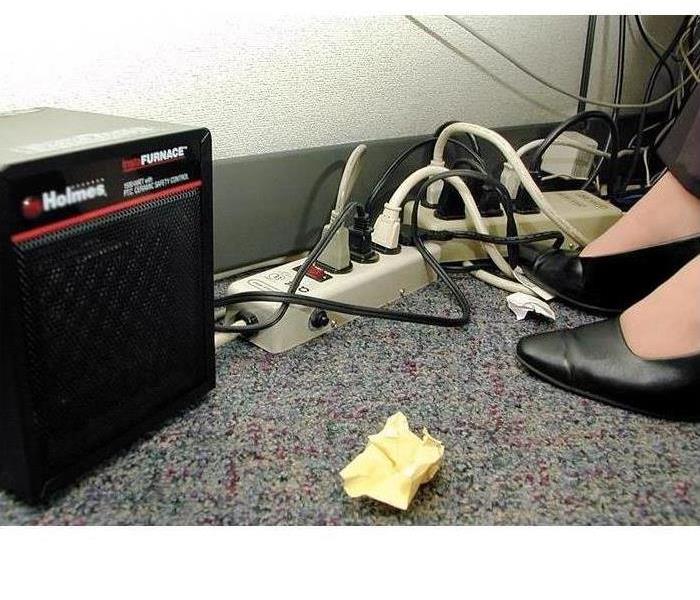Fire Prevention Tips for a Business
6/10/2021 (Permalink)
Fire is unpredictable. It can happen anytime, to any business, anywhere. 31% of office fires happen between 7pm and 7am, after hours while workers are not present. Fires occurring while employees are not present are responsible for about 67% of recorded property damage. This is because the fire went undetected for a longer period of time. Fortunately, there are a few preventative measures that anyone can take to minimize the chances of a fire happening in your business or commercial building.
According to OSHA, employers are required to perform a full maintenance check on their workplace’s fire extinguishers annually. “Maintenance” means a thorough examination, repair, or replacement as needed for all of your facility’s portable fire extinguishers, as covered in NFPA (98), Sec. 4-4.
Along with ensuring that your fire extinguishers are regularly inspected and maintained according to local fire code; a visual inspection should be conducted monthly on your fire extinguisher(s). When performing a visual inspection use the following guidelines:
- Look for obvious signs of damage including dents, corrosion, and leakage.
- Check the pressure gauge to make sure that the indicator is in the operating range.
- Make sure that the pull-pin is not missing and that the pull-pin seal is intact.
- Verify the date of the last professional maintenance inspection.
- Date and initial the tag to log the visual inspection.
Create a fire prevention plan that is in writing, posted in a highly visible area in the workplace, and available to all employees for review. If there are 10 or fewer employees, the plan may be communicated verbally. It is still highly recommended that you have a hard copy in writing. This plan should include:
- Relevant information about the building’s layout
- The building’s fire protection systems and equipment
- Emergency evacuation procedures
Ban risky appliances such as space heaters, and keep others like coffee makers and toasters away from paper and other flammables. Reduce the amount of clutter in your building or office space. Items such as boxes, piles of paper, and other flammable materials can provide fuel for a fire, especially if left near a heat source. Before plugging something in, check the cord for any damage or frayed wires. If you notice any damage to the cord or wires, replace the cord immediately or discontinue use of the item until the cord is replaced. Wires should not run under rugs or between furniture and walls; they tend to heat up, so you want them clear of any flammable items.
We understand how devastating and confusing a fire to your home or business can be. Do not hesitate to contact the experts here at SERVPRO of Media and SERVPRO of Central Delaware County to help guide you through the fire restoration process.





 24/7 Emergency Service
24/7 Emergency Service
